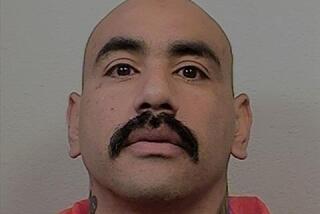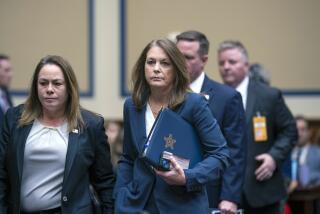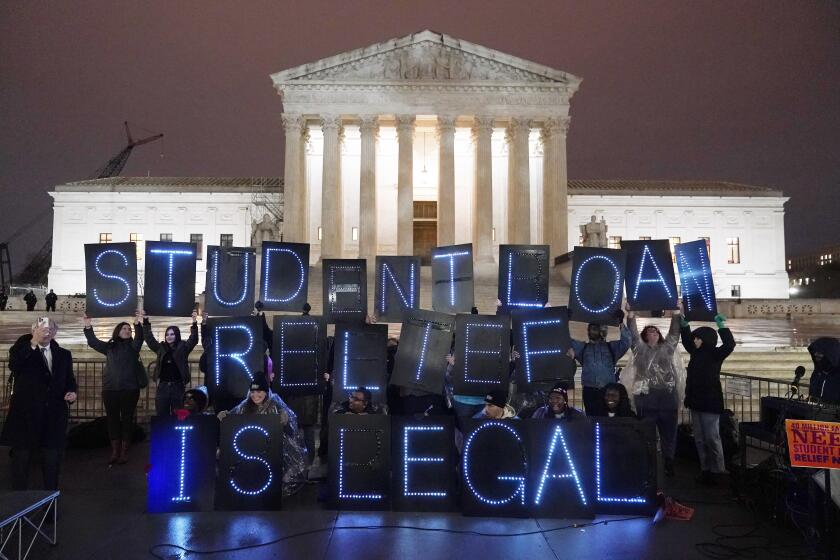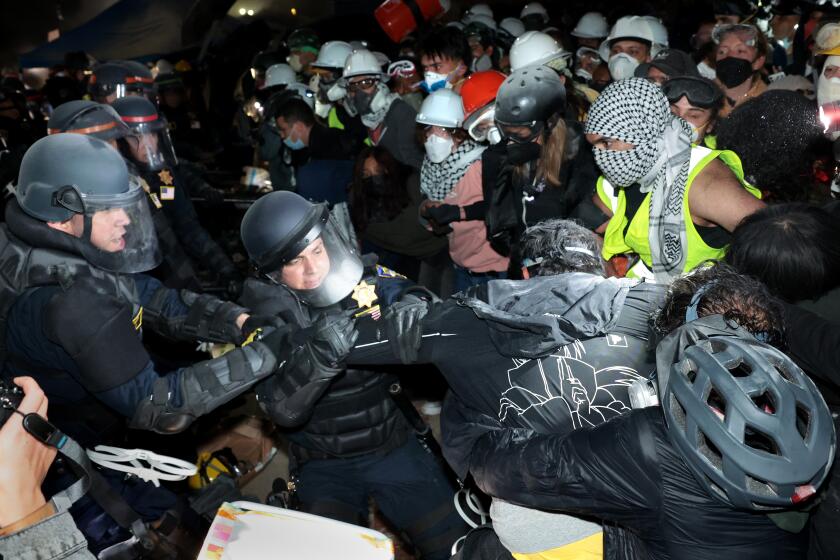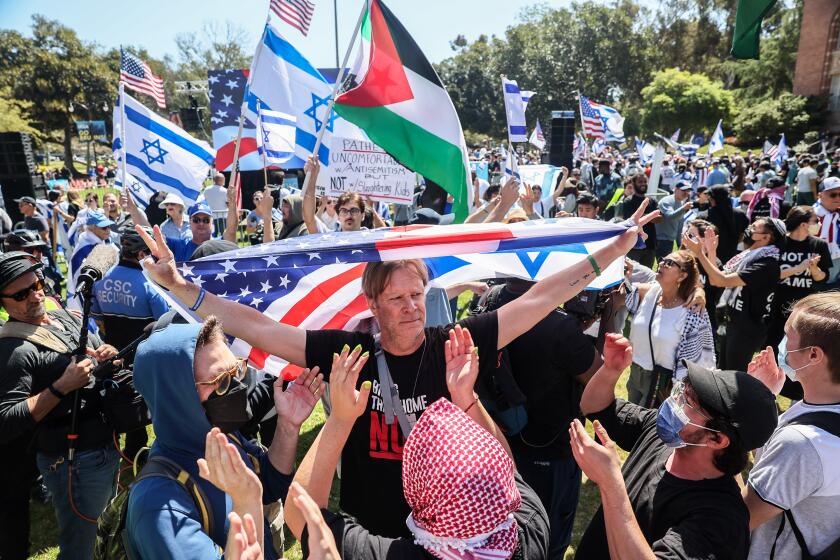Interracial Committees Help End School Fights
Jesse Lopez can’t believe it.
An ex-gangbanger and key participant in a racial brawl last year at Cleveland High School, he now looks at the school’s white homecoming queen and a black member of an opposing gang and sees his best friends.
“I thought this only happened on TV,” the teen-ager said, speaking to a roomful of fellow students who have been talking about racial issues. Everyone nodded in agreement.
Last year at this time, Cleveland High School was reeling from the aftershocks of an August, 1991, fight involving African-Americans and Latinos that administrators say was similar to the melee last week at North Hollywood High.
Now, leaders of the gangs and student cliques who started the brawl plan dances together. And students interviewed in the school’s hallways say racial tension has virtually disappeared at the school, which is about 54% Latino, 20% Anglo, 11% African-American and 10% Asian-American.
The reason, according to school administrators and students, is a program set up after last year’s incident.
With the assistance of a human relations specialist from the Los Angeles Unified School District, teacher Barbara Yanuck developed a system of student committees. The idea, Yanuck said, was to bring together students from all ethnic groups who had influence among their peers. These students, according to the theory, would learn to respect each other by working together and take that respect back to their peer group--even if that group was a gang.
Yanuck and Joel Juntilla, who works for the school district to help ease racial tensions at schools, interviewed dozens of students and chose about 70 who they believed were influential. Several were gang leaders, but others were student officers, heads of clubs and members of athletic teams.
“The students in turn will try to intervene if there is a situation that is volatile,” Principal Ida Mae Windham said. “Or they may bring to the meetings some information that there are some problems that seem to be brewing.”
Last year, Yanuck said, the committees stopped four racial fights before they started. This year, a fight that had been planned by a gang for the night of the school’s homecoming game and dance was also prevented, she said.
Students in the program said there are still problems, especially with ninth-graders who are new to the school and have yet to come in contact with the committees and their efforts to promote understanding on campus.
Senior Carlos McGhee--who said he has associated with members of the Bloods gang in South-Central Los Angeles and participated in last year’s fight--joined Yanuck’s program because he was ready for the violence to end.
“My little brother is coming along,” Carlos said. “I don’t want him to end up like me, coming home with scars on his face.”
Carlos said it took awhile for the group’s message to get through. Gang members in particular were skeptical, he said. “At first they didn’t want to hear it,” Carlos added. “But then they were tired of getting jumped, and they decided to listen.”
The result, students said, is that Cleveland High is no longer the scary place it once was.
Senior Bwerani Nettles, who is president of Brothers and Sisters United (formerly the Black Student Union) at Cleveland, said he knew the program was working when he found himself in the middle of a group of African-American and Latino students who were about to fight.
“Something was about to happen at one of our noon dances,” Bwerani said. “I walked in between and said: ‘Hey, whassup? What’s happening?’ ”
“And nothing happened,” the student said. “It stopped.”
More to Read
Sign up for Essential California
The most important California stories and recommendations in your inbox every morning.
You may occasionally receive promotional content from the Los Angeles Times.
